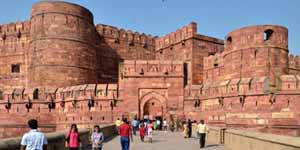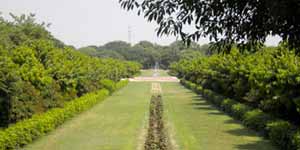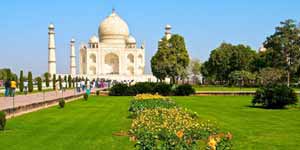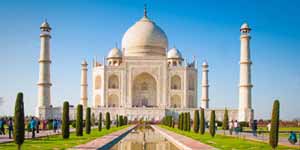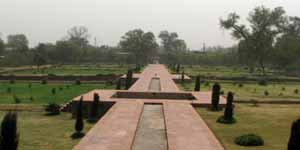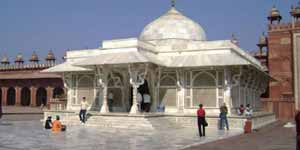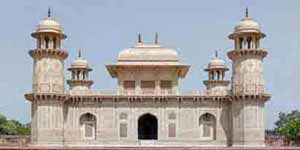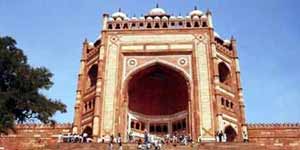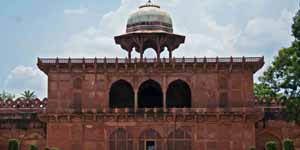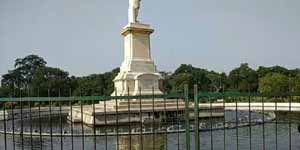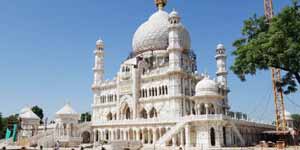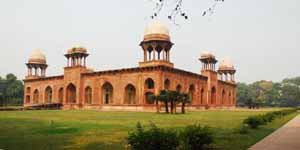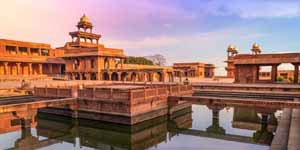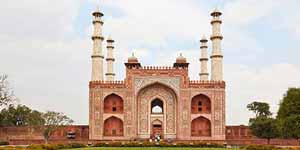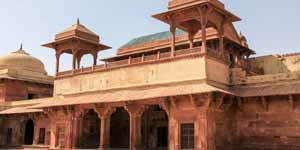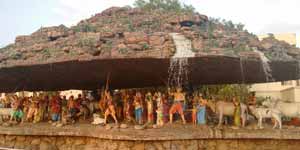

Chini ka Rauza is considered a milestone in Indo-Persian architecture, as it is the very first building in India that has been exclusively decorated by the glazed tile works. The decoration is prominent on façade and exteriors. Chini ka Rauza is actually a small mausoleum that overlooks the River Yamuna. The tomb is a fine architectural example of pure and undiluted Persian architecture.
This is a tomb to Mir Afzal Khan, a senior Wazir or minister in the court of Shah Jahan. Afzal Khan was actually a resident of Shiraz in the then Persia who migrated to India on the invitation of Shah Jahan. He was actually a poet-scholar who later rose to the post of Wazir-e-Ala i.e. Prime Minister in the reign of Shah Jahan. The man himself constructed Chini-ka-Rauza. The name is derived from two Persian words Chini Mitti and Rauza that means glazed tiles and tomb respectively.
Built in 1635, Chini-ka-Rauza is situated just a Kilometer North to the famous Itmad-ud-Daula on the same side of Yamuna but is in dire straits due to negligence. Though it does not match the charm of Itmad-ud-daula, its importance as being the only pure Persian architecture in India, makes it worth preserving.
Parts of the walls are still covered with the colored enamel tiles that once enhanced the whole of the exterior and gave the tomb its name, while traces of paintings and Islamic calligraphy can still be made out on the high domed ceiling. On the top of the chamber are inscribed some Quranic verses. Although it is in a dilapidated condition, but still its craftsmanship is worth seeing.
History
Chini Ka Rauza was built in 1635 during the period of Shah Jahan. It is a funerary monument built in the memory of the great poet and scholar Allama Afzal Khan. It is also among the first monuments to be decorated with glazed tile work. From this it derived its name, as porcelain is also known as Chini Mitti (Chinese clay) in many parts of India. It is said that Allama Afzal Khan built the tomb during his lifetime.
Architecture
As the name suggests, the monument is made with tiles of fine china and mud. The tomb itself is built in Afghan style and is the only monument in India with Persian architecture. The whole building was built with colorful tiles and brown stones in rectangular shape. The tomb was splendid and the walls have various Islamic inscriptions written on them.
Originally the tomb had two main gates, one in the north and the other in the south. It was a three-storied tower in octagonal shape near the ghat. But most of it is now in the ruins and only the main tomb survives. The unique architecture of the tomb is evident in the interior and the exterior. Colourful embellishments are found in the brackets, chajja and balconies. The arches are decorated with intricate designs and have orange and blue tiles. The whole tomb was decorated with colourful tiles and was a masterpiece in itself.
How to Reach Chini ka Rauza in Agra
To reach here, head from station road to the east side and take the first left to the station road. Here after 130 m, turn right and passing through 1st round about drive for another 160 m. Then turn left towards SH 39 follow it towards right side for around 1.5 km, passing Hari Om Tandoorwala on the left. Then turn left at Namner Cross while staying on SH 39. After another 2.5 km, turn left from Goyal Trading Company towards Yamuna Kinara Road and continue on NH 3/ SH 39 while passing M/S Shanti Traders on the left. Drive for 1 km then turns right on SH 39 and then turn on Strand Road. For another 1.8 kms continue on the same road passing R. L. Kushwaha Nursery and then turn left to reach Chini Ka Rauza.
